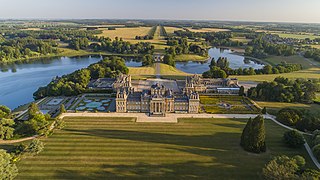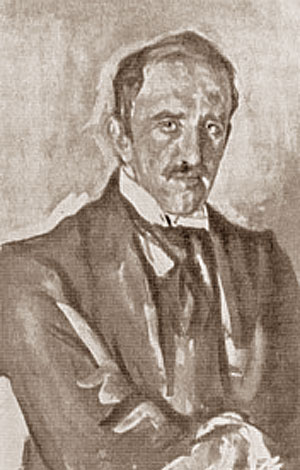Mark Coreth (born 1958) is a British artist.
Mark Coreth (born 1958) is a British artist.
Mark Coreth was born in London in 1958 and was immediately dispatched to the family farm in the Kenyan highlands where the Equator ran through the house. Black and white colobus monkeys leapt amongst the branches in the trees behind the house where leopard and cheetah also lived. This idyllic childhood fostered Mark's early and continuing passion for wildlife.
After prep school in Kenya, Mark attended Ampleforth College, and on leaving he joined The Blues and Royals, serving with the Regiment as a regular officer. He has spent time in England, Cyprus, Germany, Northern Ireland and the Falkland Islands during the 1982 hostilities. On his return to England he was commissioned to make a silver sculpture of his regiment's drum horse "Belisarius" for the Warrant Officer's Mess, and later a second cast in bronze became the Household Cavalry's wedding present to the Duke and Duchess of York; this was Coreth's first commission. [1]
His specially commissioned work includes a pair of life-sized cheetah in a bronze tree for the ruling family of Dubai, a large figure for the re-launch of Shakespeare's Globe Theatre, and the monumental Millennium sculpture The Waterhole at the Natural History Museum in London, which incorporates over 50 animals.
The Coreth one-man exhibitions at the Sladmore continue to be exciting bi-annual events [2] with the frenzied attendance and resulting sales the talk of the art world. In between, he has regular foreign shows including Paris, New York and Sydney, and most importantly leaves himself time to fit in trips around the world for inspiration.
The Ice Bear Project is a not-for-profit arts organisation, inspired by Mark Coreth. Coreth witnessed the effects of climate change when he first travelled to Baffin Island during November 2007. He knew that few will ever experience the Arctic, and so decided to bring the Arctic to everyone in the form of an Ice Bear sculptural event. [3]
The following people all have works by Mark Coreth in their collections (or did so during their lifetimes): [4]

The Life and Death of King Richard the Second, commonly called Richard II, is a history play by William Shakespeare believed to have been written around 1595. Based on the life of King Richard II of England, it chronicles his downfall and the machinations of his nobles. It is the first part of a tetralogy, referred to by some scholars as the Henriad, followed by three plays about Richard's successors: Henry IV, Part 1; Henry IV, Part 2; and Henry V.

Blenheim Palace is a country house in Woodstock, Oxfordshire, England. It is the seat of the Dukes of Marlborough and the only non-royal, non-episcopal country house in England to hold the title of palace. The palace, one of England's largest houses, was built between 1705 and 1722, and designated a UNESCO World Heritage Site in 1987.

Mark Wallinger is an English artist. Having previously been nominated for the Turner Prize in 1995, he won in 2007 for his installation State Britain. His work Ecce Homo (1999–2000) was the first piece to occupy the empty fourth plinth in Trafalgar Square. He represented Britain at the Venice Biennale in 2001. Labyrinth (2013), a permanent commission for Art on the Underground, was created to celebrate 150 years of the London Underground. In 2018, the permanent work Writ in Water was realized for the National Trust to celebrate the Magna Carta at Runnymede.

Sir Jacob Epstein was an American-British sculptor who helped pioneer modern sculpture. He was born in the United States, and moved to Europe in 1902, becoming a British subject in 1910.

The National Portrait Gallery (NPG) is an art gallery in London that houses a collection of portraits of historically important and famous British people. When it opened in 1856, it was arguably the first national public gallery in the world that was dedicated to portraits.

Sir Joseph Edgar Boehm, 1st Baronet, was an Austrian-born British medallist and sculptor, best known for the "Jubilee head" of Queen Victoria on coinage, and the statue of the Duke of Wellington at Hyde Park Corner. During his career Boehm maintained a large studio in London and produced a significant volume of public works and private commissions. A speciality of Boehm's was the portrait bust; there are many examples of these in the National Portrait Gallery. He was often commissioned by the Royal Family and members of the aristocracy to make sculptures for their parks and gardens. His works were many, and he exhibited 123 of them at the Royal Academy from 1862 to his death in 1890.

Sir John Robert Steell was a Scottish sculptor. He modelled many of the leading figures of Scottish history and culture, and is best known for a number of sculptures displayed in Edinburgh, including the statue of Sir Walter Scott at the base of the Scott Monument.

Sir Anthony Alfred Caro was an English abstract sculptor whose work is characterised by assemblages of metal using 'found' industrial objects. He began as a member of the modernist school, having worked with Henry Moore early in his career. He was lauded as the greatest British sculptor of his generation.

Sir Edwin Henry Landseer was an English painter and sculptor, well known for his paintings of animals – particularly horses, dogs, and stags. However, his best-known works are the lion sculptures at the base of Nelson's Column in Trafalgar Square.

Prince Paolo Petrovich Troubetzkoy was an artist and a sculptor who was described by George Bernard Shaw as "the most astonishing sculptor of modern times". By birth, he was a member of the ancient House of Trubetskoy.

Henry Spencer Moore was an English artist. He is best known for his semi-abstract monumental bronze sculptures which are located around the world as public works of art. Moore also produced many drawings, including a series depicting Londoners sheltering from the Blitz during the Second World War, along with other graphic works on paper.

Sir Edgar Bertram Mackennal, usually known as Bertram Mackennal, was an Australian sculptor and medallist, most famous for designing the coinage and stamps bearing the likeness of George V. He signed his work "BM".

Mark Jenkins is an American artist who makes sculptural street installations. Jenkins' practice of street art is to use the "street as a stage" where his sculptures interact with the surrounding environment including passersby who unknowingly become actors. His installations often draw the attention of the police. His work has been described as whimsical, macabre, shocking and situationist. Jenkins cites Juan Muñoz as his initial inspiration.

William Shakespeare has been commemorated in a number of different statues and memorials around the world, notably his funerary monument in Stratford-upon-Avon ; a statue in Poets' Corner in Westminster Abbey, London, designed by William Kent and executed by Peter Scheemakers (1740); and a statue in New York's Central Park by John Quincy Adams Ward (1872).
The Sladmore Gallery is a London art dealership with two premises, one at 32 Bruton Place off Berkeley Square and the other established at 57 Jermyn Street in 2007. Its speciality is animalier sculptors.
Jonathan Martin Kenworthy is a British sculptor and Fellow of the Royal Society of British Sculptors.
Nic Fiddian-Green is a British sculptor, who specialises is making lifelike models of horses' heads, both smaller and larger than life-sized.

Hamish Mackie is a British wildlife sculptor who works in bronze, silver and any other castable metal using the lost-wax casting method. He is considered to be one of the world's foremost wildlife sculptors. Largely self-taught, Mackie captures his subjects - ranging from livestock to birds via wild animals - by observation in a natural environment, taking detailed photographs and sometimes modelling in plasticine. From this he creates a highly accurate anatomical core covered with a loose, almost impressionistic skin that captures the essence of the animal's personality. He has won numerous commissions including works for Jilly Cooper, Charles Saatchi, Ronnie Wood (private) and RSPCA, National Trust, Woburn Abbey, Merrill Lynch, Hiscox and most recently the Berkeley Group Holdings (public). He has travelled to places including Antarctica, the Falkland Islands, Australia, across Africa, and the United Arab Emirates in search of subjects.

The London Troops War Memorial, located in front of the Royal Exchange in the City of London, commemorates the men of London who fought in World War I and World War II.

Portrait of the Duke and Duchess of Cambridge is the first official joint portrait of William, Prince of Wales, and Catherine, Princess of Wales, unveiled at the Fitzwilliam Museum on 23 June 2022 in the presence of the couple. Following an idea by Sir Michael Marshall, Jamie Coreth was commissioned in 2021 by the Cambridgeshire Royal Portrait Fund, which is held by the Cambridge Community Foundation, to paint a portrait of the Duke and Duchess as a gift to Cambridgeshire. The portrait will be kept at the Fitzwilliam Museum for three years, but it will be loaned to the National Portrait Gallery, London for a brief period in 2023 to mark its reopening. It will later on be displayed in different places and galleries across Cambridgeshire. The Duke called the painting "amazing" at the unveiling ceremony.